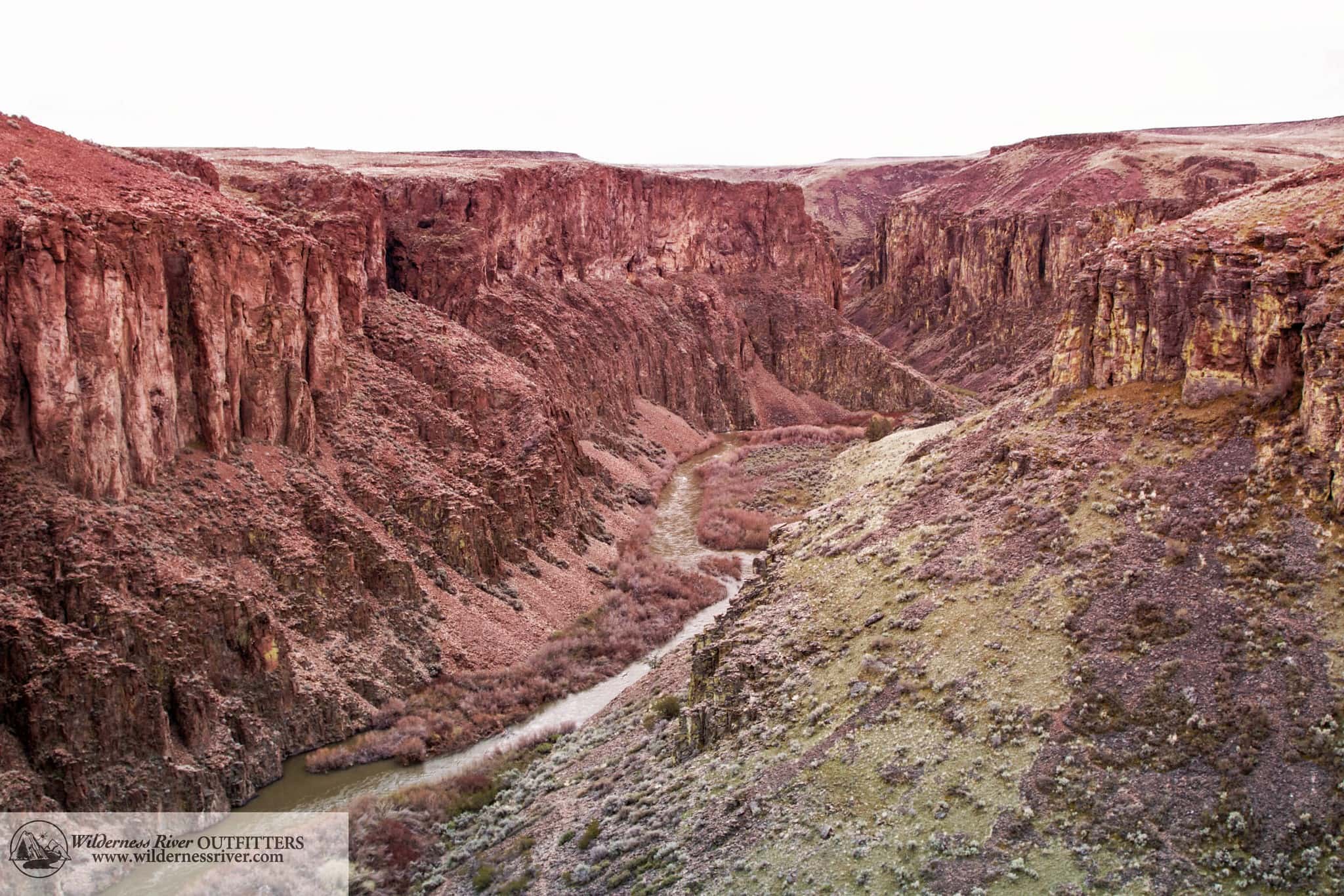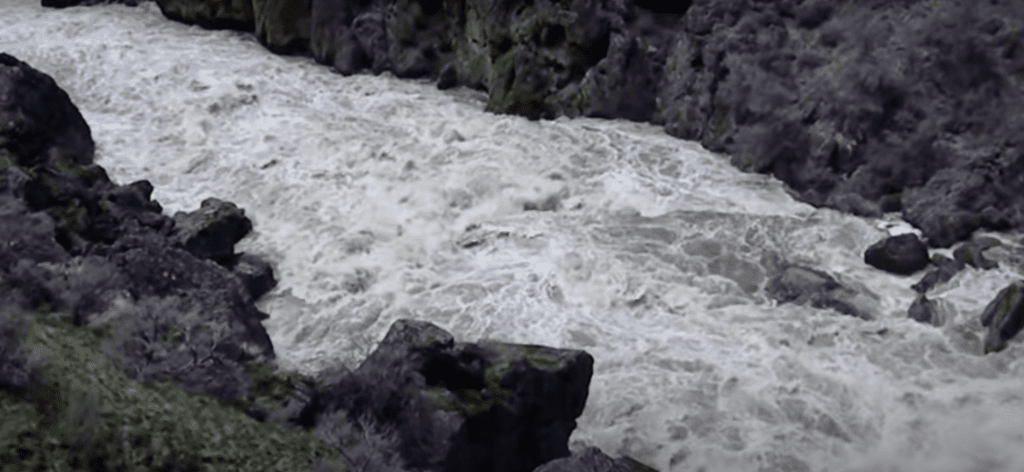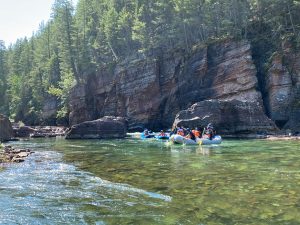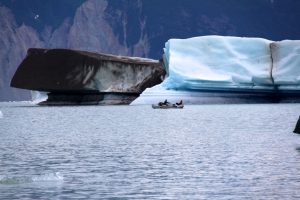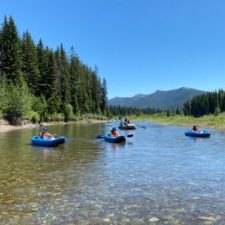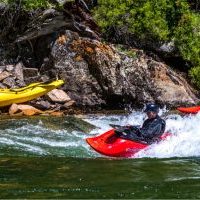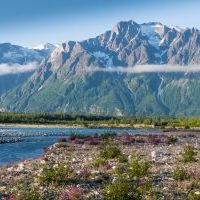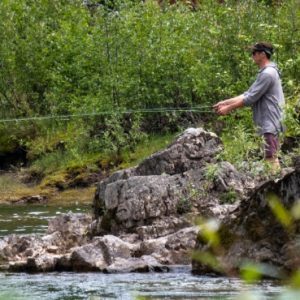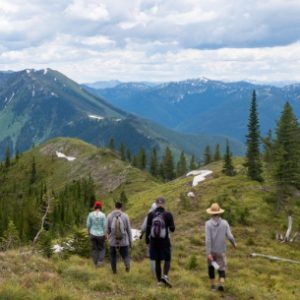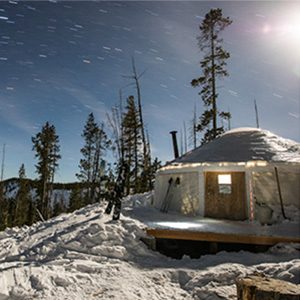Overview
The Owyhee offers hundreds of miles of river trip options for a wide range of paddling skills, with the same stunning, remote desert landscape of the Owyhee Canyon. This river is spring run-off dependent, and is a largely sought-after, elusive river in the area, not only because of the limited spring season, but also for its notoriously confusing backcountry 4×4 access roads. The wild Owyhee River whittles a dramatic, narrow canyon through the highlands of southern Idaho and Oregon, cutting through the rhyolite and basalt plateau as it has for millennia. There is a reason this tributary of the Bruneau has so often been likened to the Grand Canyon. But unlike the Grand, the few that venture to this extraordinary river have its magic all to themselves—the sound of songbirds echoing against thousand-foot sheer canyon walls, the springtime bloom of desert wildflowers, and rapids that vary from fun, Class III waves and holes to technical whitewater. This hidden gem offers an incredible opportunity for paddlers of all levels looking for adventure and a sense of solitude.
Our Upper and Middle Owyhee trips are better suited for solid intermediate/ advanced paddlers, while the Lower Owyhee is a great option for more beginner/ intermediate skill levels. *See WRO’s skill requirements overview.)
Upper Owyhee (Duck Valley to Crutcher’s Crossing to Three Forks)
- 5-8 days, 41-103 miles
- Swift, technical, thrilling class III-IV whitewater
- Lambert’s gorge, class V falls and portages
- High adventure
- Remote setting
- Inflatable kayak/ packrafting
The Middle Owyhee (Three Forks to Rome)
- 3-4 days, 37 miles
- Swift, technical, thrilling class III-IV whitewater
- Class V falls and portages
- High adventure
- Remote setting
The Lower Owyhee (Rome to Birch Creek)
- 5-6 days, 68 miles
- Friendly, class II-III whitewater for all experience levels
- Easy access
- Simple logistics
For more specific information about each individual trip, check out the general trip pages for the Upper, Middle, or Lower Owyhee.
There are more than 250 miles of navigable river in the Owyhee Canyonlands! Each section offers abundant hiking opportunities, wildlife, whitewater, pioneer history, and an extraordinary glimpse into geologic time. Spring on the Owyhee during the snowmelt runoff is truly glorious: the wildflowers are blooming, the red-wing blackbirds are singing, and the rapids get exciting. A hike to the canyon rim to spot an antelope in the distance, an eagle chasing its prey, or just to admire the “awesome vastness” of this country is often a trip highlight. We can also venture to historic trapping and homestead cabins along the way and marvel at the determination of those who carved out a living in this rugged country. The Owyhee River’s reputation as a big-time whitewater river is well deserved, but there is a quieter side to these beautiful canyons, especially in the Middle and Upper sections. Between rapids there are long, calm stretches of water, allowing us time to listen to the river and take in the sheer walls of red-gold rhyolite towering thousands of feet over our boats.
We have extensive experience on the Owyhee, and all the different sections and access points to these river canyons create endless possibilities for customizing your trip. Ask us for details and we can help make sure you get the trip you’re looking for!
Why Raft Support?
When self-support kayaking, you often have to be a minimalist. When traveling with raft support, you are able to bring all your heart desires, and probably more! Our rafts carry all of your personal things (costumes and dry shoes anyone?), and other items that self-support boating does not allow for such as coolers for gourmet food prepared for you (no more ramen and MREs!), beer, extensive safety supplies, a full-sized firepan with a daily fire, latrine facilities, logistics taken care of, etc. Without the bulky weight of your gear in your kayak, it allows for quicker, more responsive (and fun!) paddling, and also opens up possibilities for more low-volume styles of boats for those looking to spice up the class IV.
If running this type of river without ever seeing it makes you nervous, or you are traveling alone, having a safety kayaker/ kayak guide is a great way to travel. Traveling with one of our knowledgeable safety kayakers is a great way to gain confidence and expertise through this technical run. Lastly, this type of trip also allows for you to bring non-kayaker family and friends to also be able to enjoy a perfect river vacation for everyone involved.
The Stats
| Departure Month | April |
| State / Region | |
| Adventure Level | Moderate, High |
| Price Range | Under $1500, $1500 - $2000 |
| Activities | Inflatable Kayaking, Hard Shell Kayaking |
Logistics
This trip is relatively simple logistically for your travel plans as it begins and ends in Boise, Idaho (BOI). The before and after trip plans are the same for the Upper, Middle, and Lower Owyhee, the only thing varying being driving times to and from the river.
WRO Kayak Rentals
WRO has a wide range of playboats, half-slices, and river runner/ creek boats to reserve for the week in a variety of sizes. WRO does not provide paddle, skirts, helmets, PFD’s, or personal dry gear. For more information, contact Seth, [email protected]. (Reservation website coming soon.)
Before the trip:
Travel to Boise, Idaho (BOI) no later than 5:30 pm one day prior to your trip’s launch date, with lodging arranged for this first night. We recommend staying at the Best Western (Vista) Inn for logistic simplicity. The hotel has a free airport shuttle or parking available to leave your car if you plan on driving to Boise.
Plan on meeting for orientation at 6 pm the night before the launch at the Best Western Inn (Vista) (1-800-727-5006). Here you will meet your trip leader, other guests that will be on your trip, and we will hand out dry bags, discuss the trip details and answer any last minute questions.
The next morning we will depart the Best Western Inn and drive as a group to the river put-in, which the length of drive will vary depending on what section of river (Upper, Middle, or Lower) you are doing.
After the Trip:
We provide transportation to Boise from the river take out. The length of the drive will vary depending on what section of river (Upper, Middle, or Lower) you are doing, but we typically aim to arrive by late afternoon.
* When running the Owyhee, one can plan for one thing, but get dealt a different hand. Water levels and road conditions can sometimes limit what exact section we run.
Sample Itinerary
The itinerary will vary slightly depending on which section you are boating and how many days you would like to do. Owyhee trips can be custom designed depending on your interests, so feel free to contact the office to discuss dates and trip options.
Day before the trip: Arrive in Boise, Idaho no later than 5:30 pm with lodging arranged for this first night. Plan on meeting for orientation at 6 pm the night before the launch at the Best Western Vista Inn. Here you will meet your trip leader, other guests that will be on your trip, and we will hand out dry bags, discuss the trip details and answer any last minute questions.
Day 1: We’ll get an early start for our drive to the river at the Garat Launch site. We usually have lunch, gear up and have a river safety talk before taking to the river. The first day we have a pretty mellow float to camp at the Tules. This spot is a beautiful place with great scenery and hiking options, either for that evening or the next morning.
Day 2-4: We usually start off the day with a dutch-oven breakfast around the campfire in the morning. After packing our bags and strapping our loads down we’ll hit the water. We try to customize our activities to the interests of each particular group. Our days on the river vary with many opportunities for hiking, exploring and relaxing around our beautiful camps. The Upper Owyhee from Garat to Crutcher Crossing is a pretty mellow whitewater section with spectacular canyon scenery, especially through the tight section of Lambert Gorge! Owyhee Falls is in the Lambert Gorge section, and requires some time to portage or line the rafts through depending on water levels. There are also several interesting old homesteads and historical sites of Native Americans and pioneers that once lived in this area. We’ll usually get to camp in the early evening, try to have some time for hiking and enjoying the scenery, followed by a delicious dutch-oven meal around the campfire.
**At the end of day four we will camp at Crutcher Crossing, where the first half of the Upper Owyhee ends and the second half begins. We often do a resupply here and people can join or leave the trip if they wish to do just one of the four day options.
Day 5-7: From Crutcher Crossing to Three Forks the whitewater picks up a bit with rapids like Cable and Cabin. Depending on water levels, sometimes we have to line the rafts through Cable. The scenery is impressive with some more great hiking options too. We will try to camp a few miles above Three Forks the last full day.
Day 8: The final day we will try to stop at some warm spring to check those out before arriving at Three Forks. After lunch, we will load up in the vehicle and head back to Boise. Or if you haven’t had enough or want the full Owyhee experience, continue downstream the next day on the four day Middle Owyhee extension!
FAQs
Kayaking/ Miscellaneous
We generally ask that if people sign up for a trip as a kayaker that they plan to paddle the entire trip. This is mainly because we base our number of rafts, guides, and gear distribution off of planning on having people in their kayaks. That being said, we can absolutely make accommodations for individuals in certain situations, (Not wanting to run a particular rapid, medical situations, etc.)
All and all, this is your trip and we are here to ensure you have the best trip possible.
Camp Life and Meals
On the River
Clothing, Footwear, and Gear
Logistics
Book Now
